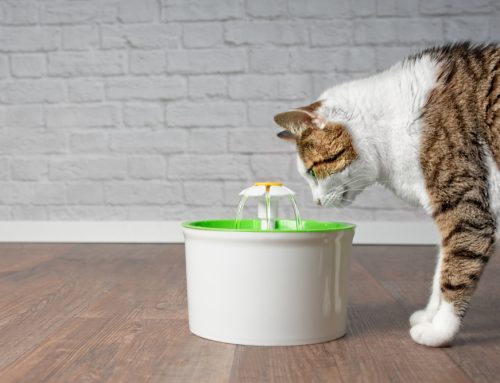Noise aversion is a common, but largely undiagnosed, condition that affects roughly two-thirds of dogs and an untold number of cats. Left untreated, noise aversion continues to progress until the issue becomes incredibly detrimental to your pet’s mental and physical health. Pets with severe noise phobias often do a great deal of damage in their panic, and can accidentally injure themselves and damage their surroundings as they try to escape or hide.
The best way to help your noise-averse pet is through early intervention. Learn how to identify noise aversion in your pet, and then take action to calm their fears before they become worse.
What noise aversion looks like in pets
Noise aversion can be caused by any unsettling, loud, or repetitive sound. Most commonly, pets develop noise phobias to thunderstorms, fireworks, gun shots, and construction sounds, but can also become nervous around the vacuum, alarms, and shouting children.
Pets show many obvious noise-aversion signs, such as tucking their tail and cowering under the table when you run the vacuum. Other, less obvious signs can include:
- Trembling
- Pacing
- Restlessness
- Clingy behavior
- Excessive drooling
- Heavy panting
- Vocalization
- Hiding
- Inappropriate elimination
- Chewing, digging, or scratching
- Attempting to escape
Pet owners often consider these normal behaviors in the face of loud events, and they fail to mention their pet’s issues during veterinary appointments. However, left untreated, your pet’s fear of noises can continue to escalate, so you must seek help as early as possible. Noise-aversion does not eventually “go away,” as many owners believe.
How to help your noise-averse pet
Although noise aversion can greatly disrupt your pet’s life, especially during summer storm season, you can help soothe your furry pal’s anxiety.
Here are five tactics that will help your four-legged friend remain calm in the face of their fears:
- Minimize your pet’s exposure to sound triggers — If possible, limit your pet’s exposure to the sounds they fear. For example, if your pet panics in heavy traffic, change your walking route to a path that veers away from vehicles and heads through a forested area. Or, if you are planning on making home improvements or repairs, board your pet for the day to escape from the noise.
- Work on behavioral modification — Behavioral modification techniques involve systematic desensitization and counterconditioning and are highly effective, but they take time and patience before results are visible. Let’s look at how to implement these techniques, using thunderstorms as an example.
- To desensitize your pet to thunder, play an audio clip of a thunderstorm from a CD or phone app at an extremely low volume—so low that your pet does not react. Gradually increase the volume, rewarding your pet for calm behavior. If your pet shows any anxiety, decrease the volume to a tolerable level.
- Counterconditioning consists of pairing a reward with what your pet fears, so, in this case, you would give your pet a high-value treat when they hear thunder. With time, your pet will eagerly anticipate a tasty snack when a storm approaches.
- Used together, desensitization and counterconditioning can change your pet’s view of something scary and a fearful situation can become a positive experience.
- Create a soundproofed sanctuary for your pet — If you can’t protect your pet from their fear-causing noise, keep the trigger away from them. Set them up in a quiet haven, using your innermost room, a walk-in closet, or a basement, ensuring the place is not scary for your pet and soundproofed against loud noises. Give your furry pal something cozy to curl up in, a tasty treat to distract them, and comforting music to soothe them.

- Rely on supplemental calming products — Various calming products that can be used regularly with minimal side effects can also help ease your pet’s fear. Depending on your pet’s response, they may benefit from a compression wrap, calming supplement, or species-specific pheromone sprays and diffusers.
- Enlist your veterinarian’s aid — Since noise aversion can have such a detrimental effect on your pet’s mental and physical health, they need immediate action to help them overcome their fears, and your Madison Street Animal Hospital veterinarian can help. Your veterinarian can formulate an effective management protocol to soothe your pet’s stress when they hear their noise triggers, and may prescribe anti-anxiety medication long-term or on an as-needed basis.
If your pet seems to panic when they hear loud, unsettling sounds, don’t delay and seek veterinary treatment to ease their fear. Give our Madison Street Animal Hospital team a call to schedule an appointment to discuss anxiety-alleviating techniques.





















Leave A Comment